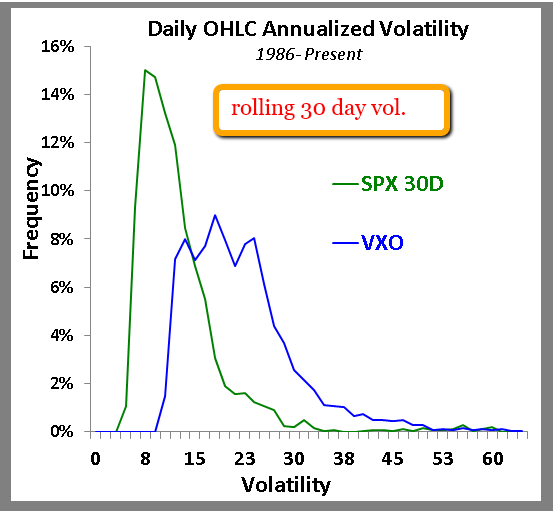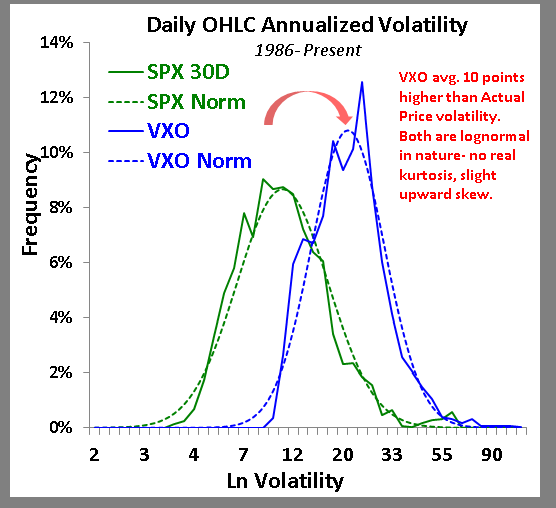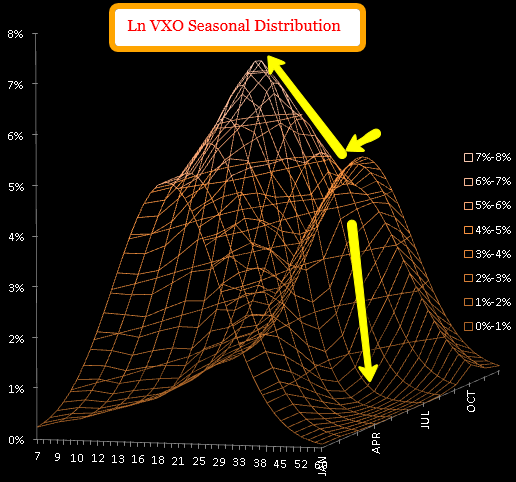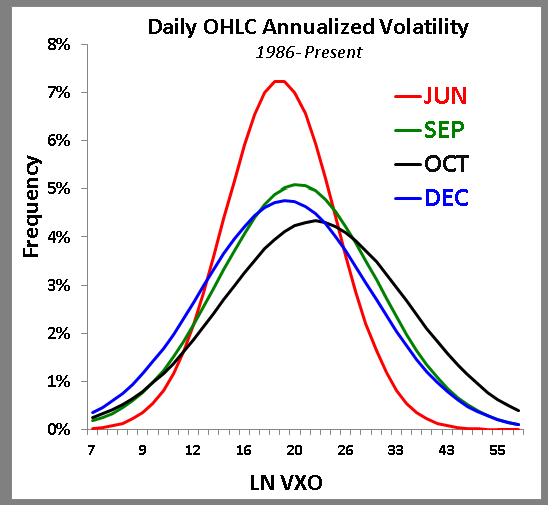More On Quant
More On Quant
Mole did a nice piece this weekend- and I do not have much to share for an outlook- but thought I might elaborate more the stats. I know none of you just want to be quants, but it will (1) help you understand my stat data; and (2) will help you formulate ideas about trading the tape.
The reason I like stats, is that it rids me of bias, but many use it as a false crutch IMO. Heck many give probabilities, but do not consider the real underlying distribution. Let us start with some robust growth rates compounding over say 14 periods.
This is why many use logged SPX charts when going back to 1950. Things look flat at the beginning, but they were not; the blue line is constant growth. Here is the natural log of the data- do you see the difference? This is the dilemma with regular statistics- we presume that returns are “normal” or “lognormal.” However, I am going to give you some charts to show you that the stock market is a bit more complex than meets the eye.
This shows us why so many use LN (natural log) to adjust PRICE for ROBUST growth rates. Again we are adjusting price for growth.
So here is the SPX price vol. and VXO distribution since 1986.
Clearly this does not look like a good bell curve- now this is vol, not asset returns – there is a difference as VOL is always positive and it cannot go negative. Consequently we use lognormal (LN) distribution.
So here is the adjusted data (natural log of VOL).
So I know you are confused- but the point is that vol needs to be looked at on a natural log basis. The fit is actually very good. This means that the VIX and actual SPX vol are both lognormal- but if they are lognormal we have proved the SPX returns must not be normal. So go re-read this again and notice how I said we use LN to adjust PRICE for robust growth. Here we are adjusting VOL for robust growth- not price. I know your head hurts, but let me bring this to real world practicality.
(1) we know from Mole’s post that the SPX has different distributions when VXO>25 or less than 25; moreover, we know that the market has kurtosis. This means markets tell traders to buy low and sell high, and little moves are common. However, that is not a good idea IMO.
(2) we know from the chart above that (a) both SPX and VIX vol are lognormally distributed; and (b) the VIX distribution is > than the SPX in terms of VOL- aka IV trades at a premium to actual SPX vol.
(3) All of this proves that William Eckhardt and Nassim Taleb’s beliefs. The market is more exponential than you will ever believe. So find a way to use this to your advantage.
(4) You must understand this to survive trading. How can one have an opinion or expectation on the market if one does not understand how markets work?
(5) Nothing is ever simple, but it probably is seasonal.
Here is a horrid chart of monthly implied lognormal VXO distributions. My point here is that all VXO distributions are normal- but none have the same shape. This means that one cannot apply the population to the sample- the sample IS a separate population! Notice below the huge differences between the summer and fall.
Now here is a more practical chart. I will just say the JUN is the complete opposite of OCT.
This shows us that in OCT a VXO >30 is has over a 20% probability- whereas JUN is < 5%. Get my point? Also, OCT has a higher probability of the VXO being less than 12- just to make you more confused. That my friends is the difference between an AUG sell-off and a SEP sell-off. In any circumstance- each month is different.
Ok so I know your head hurts, but keep the main points in the back of your mind. Things LOOK one way and act another. Distributions can be 1 seasonal and 2 conditional. In any case there is more than meets they eye. So when it comes to trading, I suggest building ideas that reflect the true nature of the market.
-Volar

















